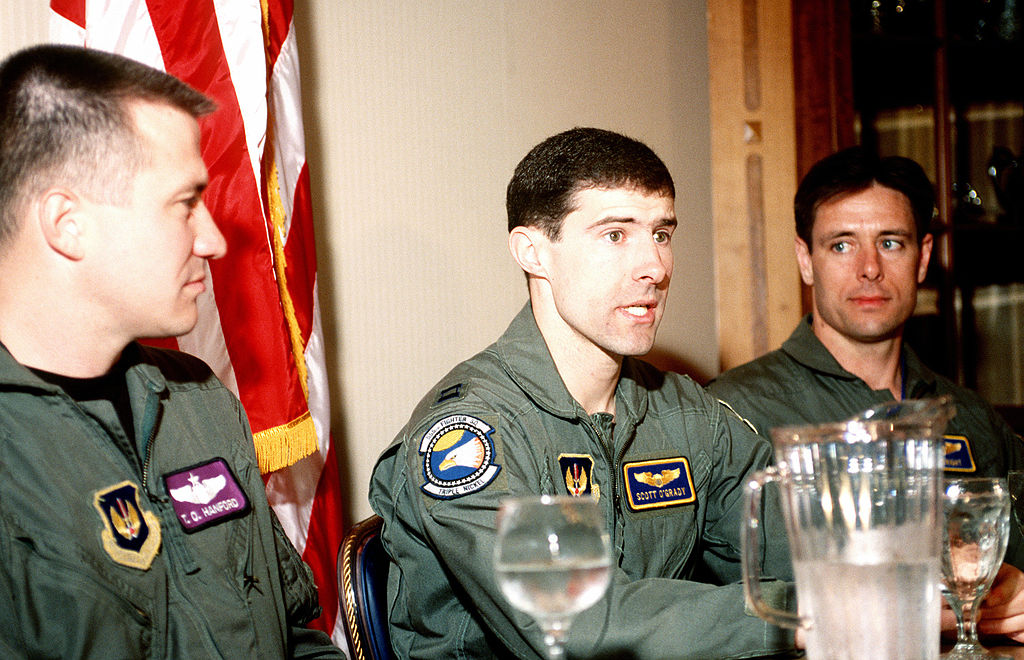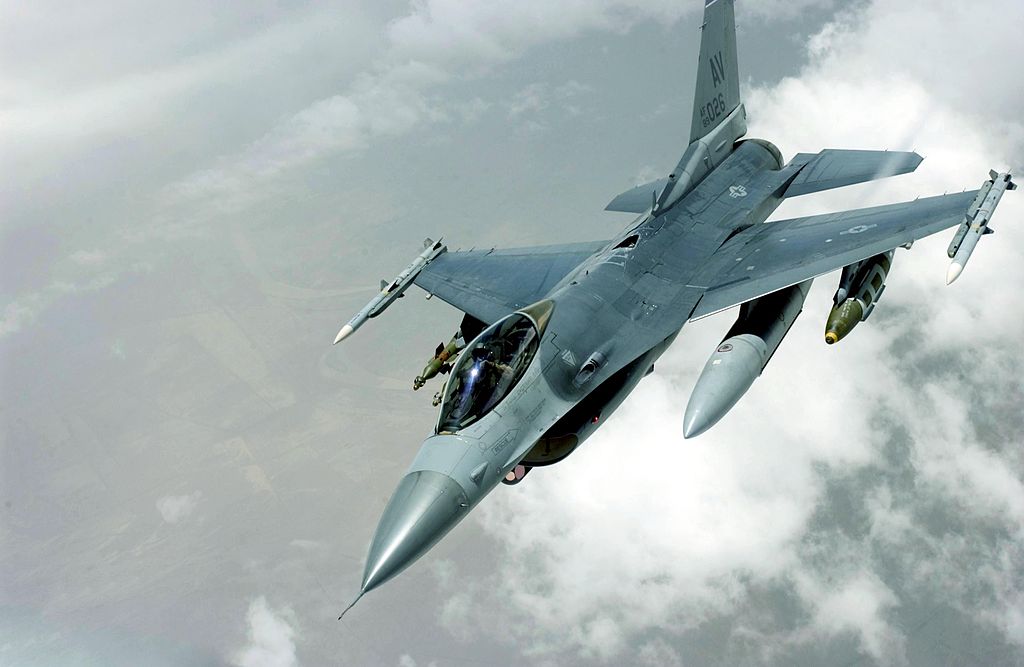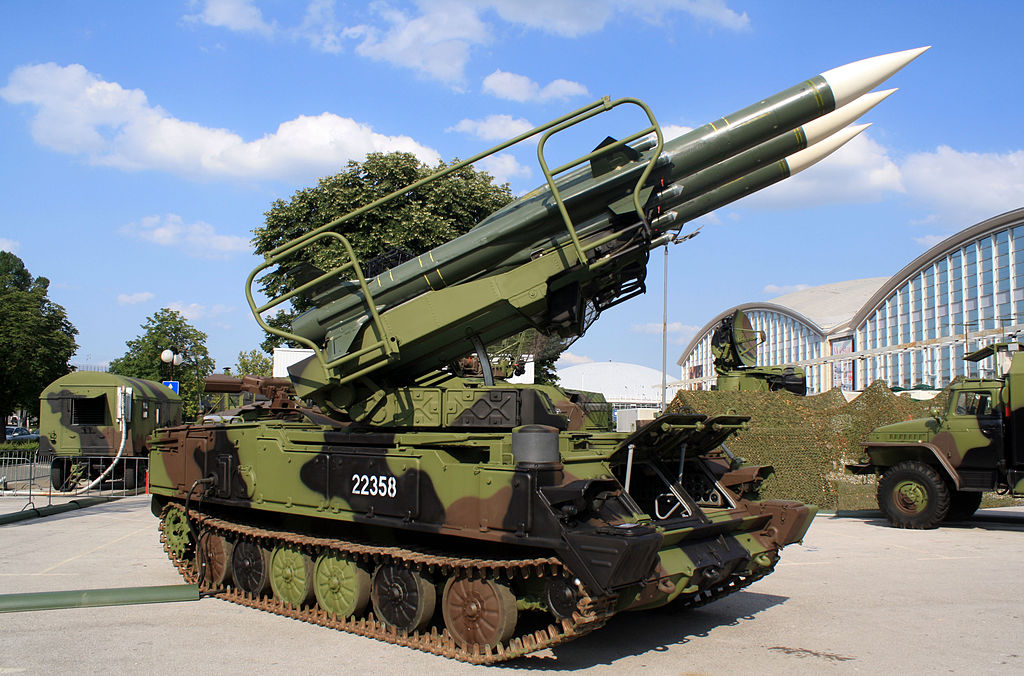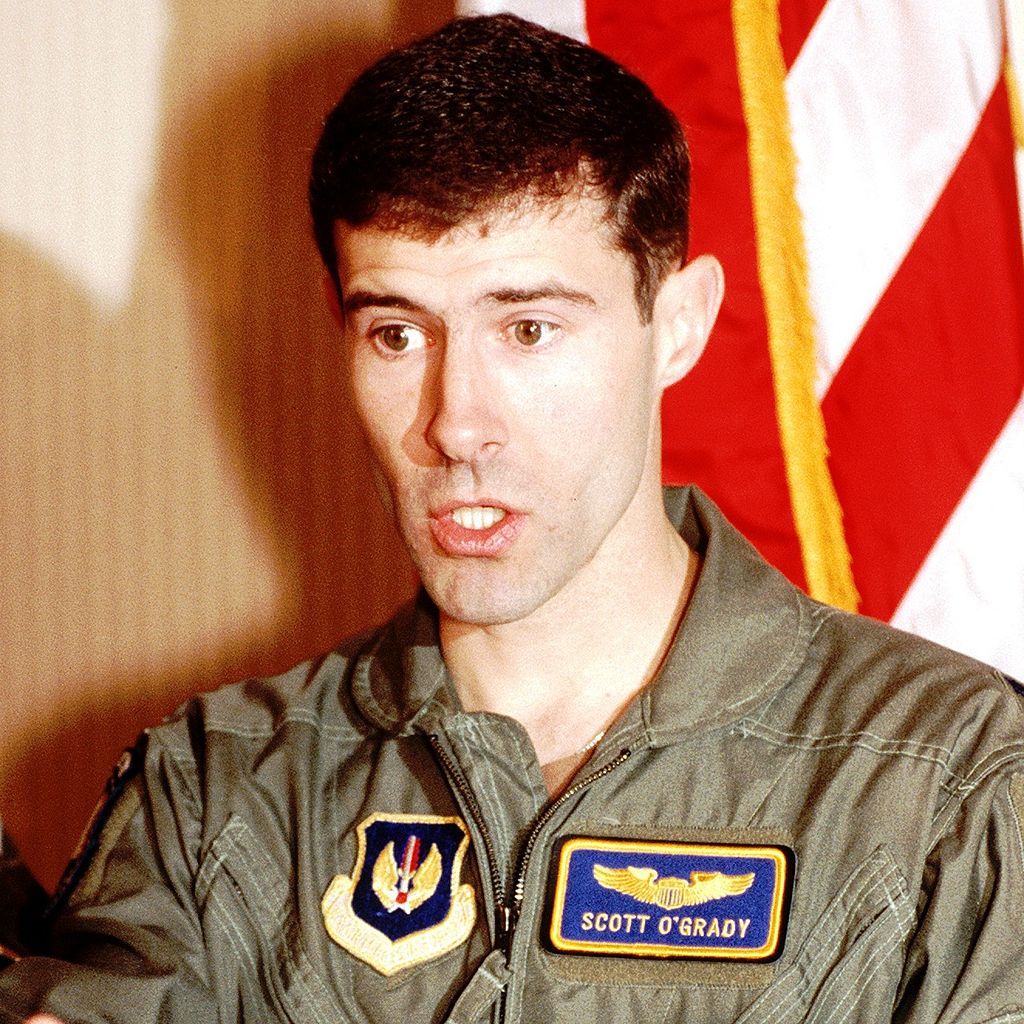“The missile had blindsided me, coming up through cloud cover be-low. It had struck the plane’s underbelly, hitting one of the fuel tanks and cutting my F-16 in two,” Capt. Scott O’Grady
To maintain peace in Bosnia, USAF F-16 pilot Scott O’Grady (callsign Basher Five-Two) and Bob “Wilbur” Wright (callsign Basher Five-One) were flying a regular “two-ship” formation on June 2, 1995.
From Aviano Air Base (AB), in northeastern Italy, both pilots were assigned to the 555th Fighter Squadron (FS), also known as the “Triple Nickel,” of the 31st Fighter Wing (FW).
They were conducting yet another conventional combat air patrol over northwest Bosnia while flying an oval pattern. There were known fixed missile positions throughout much of the path, as Capt. O’Grady himself explains this in his book Basher Five-Two: The True Story of F-16 Fighter Pilot Captain Scott O’Grady. “We knew to stay far away from the Bosnian Serb’s SAM rings to the north and to the east. SAMs—surface-to-air missiles—were a definite threat to an F-16, even with our high-tech defense systems.”
But there was a mobile site that the intelligence units had missed.
O’Grady recalls: “‘Basher Five-One, mud six, bearing zero-nine-zero,’ Wilbur radioed to me on our open frequency. He wanted me to know there was possibly a threat radar to the east. ‘Basher Five-Two naked,’ I shot back. That told him my threat warning system hadn’t picked up anything. On the same open radio frequency, I listened for Magic, NATO’s nearby airborne command center. Equipped with special Intel electronics, the airborne center served to help pilots as an early warning system. In touch with spy satellites and U-2 spy planes, Magic could tell Wilbur and me if there was active radar from the SAM rings to the north and to the east as well as in any other location. If the radar was coming from the north and the east, we didn’t have to worry because we were out of their missiles’ range. The blip on Wilbur’s threat warning system would have been a false alarm. It took Magic only seconds to get back to us. ‘Basher Five One,’ a calm voice called over our radios, ‘your mud six reports is uncorrelated.’
“Magic was saying that they couldn’t really confirm where the radar was coming from. Cautiously, Wilbur and I continued to fly our ovals. At exactly 3:03 P.M., Aviano time, my threat warning system showed a bright blip. I stared at my console in disbelief. At the same time, an alarm shrilled over my headset. I had been spiked by threat radar. Forget any threat from the north. This was coming from due east, just like the one Wilbur had picked up. Could it really be a second false alarm? My stomach did a flip. ‘Basher Five-Two, mud six, bearing zero-nine-zero,’ I said into my radio. ‘Basher Five-One naked,’ Wilbur reported back. Our roles had been reversed. It was now my turn to be hunted. I knew I had to prepare myself for the worst.”
Without the aid of radar, the mobile SAM launcher 2K12 Kub (NATO reporting name SA-6 Gainful) fired two missiles (so the Serbs could avoid being detected). When the missiles were within seconds away from O’Grady and Wright’s jets, the Serbs activated the radar.
O’Grady continues: “Through my canopy, I scanned the skies for any evidence of a missile. The actual rocket that fires a SAM leaves a trail of white smoke. That smoke is a pilot’s only chance to make a visual identification. Once the rocket turns off, the smoke stops. Then the missile sails on toward its target, silent and deadly, at a speed almost twice as fast as my F-16. Seeing nothing in the sky, my eyes swam back to the video display on my threat warning system. The bright blip had not gone away, which meant I was still being spiked. A moment later, a second alarm blared over my headset. My glance jumped back to my screen. A new warning was there, brighter than the one before. This was all happening in seconds. Split seconds. But it was long enough for me to understand I had just been locked up by a target-tracking radar. This was the type that guided a missile to its target. While I didn’t know it, Magic had received information from a spy satellite that there were missiles right below Wilbur and me, but because of garbled radio communication, we never got the message. It hardly mattered. My instrument panel had already delivered the bad news. I was in somebody’s deadly sight. As I thought out the meaning of those words, I realized a missile might already have been launched. I was angry that we had all been outsmarted by the enemy, but I tried to stay calm. This was what our years of training had prepared us for, and I was ready. A programmed voice from the plane’s computer system rang out over my headset. ‘Counter, counter.’ A second later, a brilliant red flash lit up the sky between Wilbur and me. A missile had passed between us, just missing us both. My heart sped up. I knew that SAMs were usually launched in packages of two. The chances were likely that another missile was already in the air, coming straight at me.
“As the adrenaline pumped through my veins, my thumb traveled down to the button that would release my chaff and flares. At the same time, I thought about pushing my aircraft into a series of steep climbs and dives to avoid the missile. I had time to do neither. What happened in the next tick of a second, I’m not sure. Wilbur would later tell me that he had screamed over the radio, ‘Missiles in the air!’ I never heard him. What I did hear was a thunderous roar that almost shattered my eardrums. Then came a blow like nothing I had ever felt. It was like getting rear-ended by an 18-wheeler with a rocket tied to its front grill. The missile had found its mark. A burst of flames and intense heat spread through my cockpit. I began to pitch and roll wildly. It felt as if a giant hand had reached down, grabbed me with brute force, and shaken me in a frenzy. What was left of my plane was like a straw in the wind, totally out of control. For all its space-age electronics, its supersonic speed, and its defensive powers, the F-16 is not perfect. In the blink of an eye, it can be turned from the prince of the skies into a burning scrap heap of wire and twisted metal. The missile had blindsided me, coming up through the cloud cover below. It had struck the plane’s underbelly, hitting one of the fuel tanks and cutting my F-16 in two. It took me another moment to understand. The nose and cockpit had broken away—and I was now in a free fall to Earth. As I spun out of control, I worried about blacking out from the sudden and unexpected G forces.
“I watched my console break and twist apart before me. My mind was outracing my ability to react. Flames from the exploding gas tank had found a crack between my oxygen mask and visor. They had also reached the back of my neck. Part of me was waiting for the cockpit to explode. Somehow, the heat and the pain, and the insanity of the moment focused my thoughts. Dear God, I prayed, please don’t let me die now—don’t let me die from this. I gazed down, through the flames, and saw a fat yellow handle attached to my seat. The handle pushed up between my legs, bigger than life, staring at me like the miracle I took it to be. The beautiful words stamped across the top were impossible to miss, even in the fire and smoke: PULL TO EJECT. I had no idea how much time had passed since the missile had struck. In reality, it had been only seconds. It felt like an eternity. I knew I wasn’t waiting much longer. For another microsecond, I worried that my damaged canopy wouldn’t open, or if it did, that the seat wouldn’t eject. But I really didn’t have time to worry. My left hand dropped down to the handle, and I pulled with all my might.”
His white, brown, green, and orange chute would be a trackable target since it would take him more than 25 minutes to descend into a clearing just south of a highway, according to CNN. O’Grady could see paramilitary forces pursuing as he plummeted. Fortunately, no one was firing at him, since he was unable to steer his chute.
His face and neck were injured by the blast, exacerbating his predicament. O’Grady fell to the ground as the soldiers pressed in, pulled off his chute, gathered some of his survival supplies, and ran for the woods.
He avoided the Serbian paramilitary soldiers that were out to kill him for almost a week.
The enemy was frequently nearby. He could clearly see the faces of the Serbian pilots during the first two days since the helicopter was so close. Men standing on the ground were firing at moving targets.
He moved at night, periodically trying to call for assistance on his radio. He struggled against hunger, thirst, and the gloomy weather. Until the water in his emergency pack ran out on the fourth day, he survived on ants, plants, and water from his emergency pack. The rain increased the amount of water but also saturated him. He was in the cold water for so long that he got trench foot.
Using the call sign Basher Five-Two, he communicated with Capt. T. O. Hanford, a squadron member who was flying with severely low fuel, on the sixth night, and within minutes, four U.S. Marine Corps (USMC) helicopters were flying more than 80 miles into a hostile area. A total of 40 more aircraft kept vigil nearby in case the Serbs learned about the rescue effort.
On the morning of June 8, 1995, they discovered him running out of the woods and into a small opening while holding a 9mm pistol in case of enemy fire.
He was protected by a group of Marines as he boarded one of the two CH-53E Super Stallions. In case enemy fire on the way out became a problem, two AH-1W Super Cobra helicopter gunships flew close by.
The heroes were those Marines, O’Grady said. “I was just doing my job,” he concluded.

Photo by SRA TANA R. HAMILTON, Master Sgt. John E. Lasky / U.S. Air Force and Srđan Popović via Wikipedia




